Malignant skin cancer
Skin cancer is one of the most common cancers for people, especially with light complexion (mostly Caucasian race), and it accounts for about 30% of all malignancies. The majority of this type of cancer develops within the exposed parts of the body, and the incidence of its prevalence is the highest for people working in the open-air (fishermen, farmers) as well as for people, who takes sunbath too often. It can also occurs on the skin, that is covered most of the time, e.g. genital area or lower extremity. Causes Precancerous conditions: Basal cell carcinoma (carcinoma basocellulare, basalioma, BCC)
Surgical treatment Prognosis Examples of postoperative effects: removal of skin cancers
Clinical symptoms

Malignant tumor, very rarely metastasizing, whereby locally infiltrating tissues, it can be the cause of extensive damages.
Location: facial skin, above the line joining the mouth with the ear (90%)as the neck and the backs of hands,
Symptoms: small, hard, shiny, translucent ivory-colored nodules; after a few months, around the ambit of the cancer’s focal point, there is a shiny, pearly shaft with the visible and dilated vessels (telangiectasias) on the basal surface, and in its part a scabs ulcer is formed. Spinocellular carcinoma (carcinoma spinocellulare, SCC)
Spinocellular carcinoma (carcinoma spinocellulare, SCC)
It is the second, with regard to the most frequent occurrence skin cancer and, thereby, it is the most common cancer of the transition area between the skin and mucous membranes. This cancer is derived from the cells of the cutaneous epidermis layer, and it can be formed on the unmodified skin or within pre-existing focal points of actinic keratosis or white keratosis.
Location: in most cases, it develops within exposed parts of the body (on the scalp, neck, trunk and extremities as well as within the skin of the genital organs).
Objawy: the clinical picture is varied and it depends on the location. Most often, the squamous cell carcinoma takes the form of the red papule or ciliary cartilage with an exfoliating or scabbed surface. In the further period, the change may take a form of a nodule with a papillary surface, which may be accompanied by pruritus, bleeding and pain. The squamous cell carcinoma may metastasize (2% - 20% of all SCC) to regional lymph nodes, and distant metastases to bones, brain and lungs.Treatment
The basic method of treatment of skin cancer is surgical removal of both early and advanced forms of the tumor. Removal of the tumor should be done with a margin of healthy tissue around the tumor.
In the treatment of skin cancer, the cryosurgery can be applied. Cryosurgery is applied with liquid nitrogen, which is especially applicable to pre-cancerous lesions. In the case of metastases to regional lymph nodes, the treatment consists in the excision of occupied regional lymph nodes, for a given location of skin cancer.
In the case of dynamically developing cancers and unresectable lymph node metastases, radiotherapy or chemotherapy are the treatments of the choice.
In the case of basal cell carcinoma, which practically does not give distant metastases, 100% cures are obtained. In the case of squamous cell carcinoma, the 5-years outliving is about 90%. It mainly depends on the severity of cancer and effectiveness of primary radical treatment. In the cases where metastasis to regional lymph nodes occurred the 5-years outliving is about 70%, and when the distant metastases are present, the 5-years outliving is about 30%.
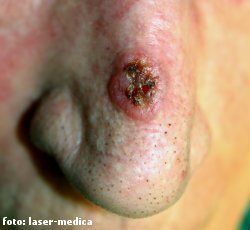
before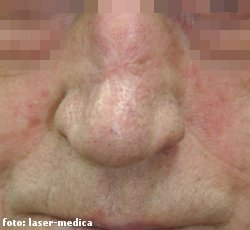
after
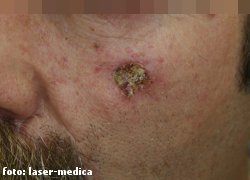
before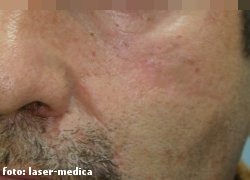
after
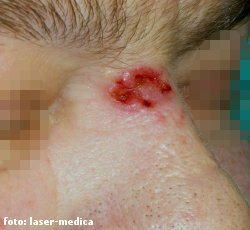
before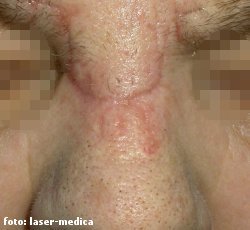
after

